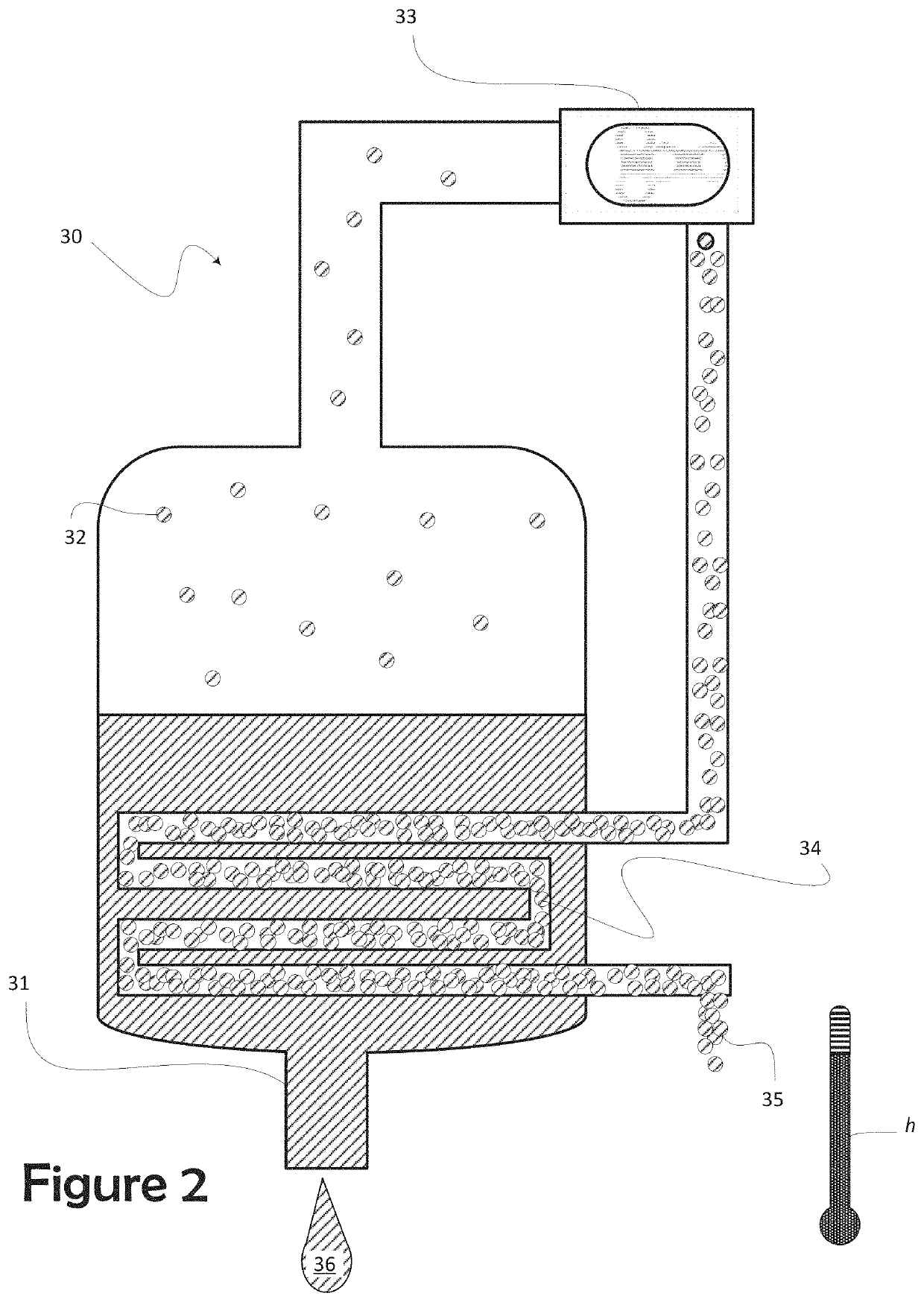Method and system for compounding fertilizer from manure without nutrient emission
a fertilizer and manure technology, applied in the field of manure management, can solve the problems of excessive wear of the mvr, and achieve the effects of convenient transportation, economic value and convenient availability
- Summary
- Abstract
- Description
- Claims
- Application Information
AI Technical Summary
Benefits of technology
Problems solved by technology
Method used
Image
Examples
Embodiment Construction
[0038]A preferred embodiment of the invention is depicted in FIG. 1. A system 10 for extracting nutrients from raw manure received from a dairy 12 is depicted as comprising an optional primary separator 14, a centrifuge 20, and a mechanical vapor recompression evaporator (“MVR 30”) operated in conjunction with an ammonia collection vessel 37. The condensate from the MVR 30 feeds an ammonia concentrating stack in the preferred embodiment (referred to herein collectively as ammonia collection vessel 37). In the preferred embodiment, collected nutrient concentrate and reclaimed solids 23 and are suitably blended, compounded, and dried to produce a variety of valuable fertilizers. Dried and concentrated, as expounded herein, the product the method and system produces is as easily transported as synthetic fertilizers and applied to agricultural fields with equal or better effect.
[0039]Manure is the other product of any dairy 12. To give a very rough scale of manure production, typical da...
PUM
| Property | Measurement | Unit |
|---|---|---|
| width | aaaaa | aaaaa |
| volume | aaaaa | aaaaa |
| diameters | aaaaa | aaaaa |
Abstract
Description
Claims
Application Information
 Login to View More
Login to View More - R&D
- Intellectual Property
- Life Sciences
- Materials
- Tech Scout
- Unparalleled Data Quality
- Higher Quality Content
- 60% Fewer Hallucinations
Browse by: Latest US Patents, China's latest patents, Technical Efficacy Thesaurus, Application Domain, Technology Topic, Popular Technical Reports.
© 2025 PatSnap. All rights reserved.Legal|Privacy policy|Modern Slavery Act Transparency Statement|Sitemap|About US| Contact US: help@patsnap.com


